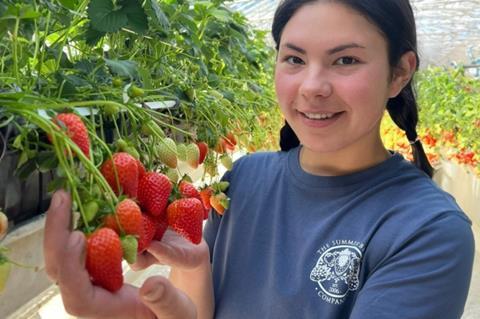New-season crop has been grown by Summer Berry Company and supplied by DPS

The first commercial quantities of UK-grown strawberries have begun hitting Tesco shelves this week, the supermarket has announced.
After months of rain, the weather picked up last week with temperatures in the high teens and enough sunshine to initially deliver more than 150 tonnes of fruit, which equals around 375,000 punnets.
The first strawberries have begun hitting Tesco shelves in West and East Sussex, with surrounding counties expected to follow on next week, depending on the weather. The 400g punnets are selling for £2.20 each.
Tesco strawberry buyer Callum Baker said: “There’s nothing like the start of the British strawberry season to put a smile on people’s faces, especially after all the rain we’ve had for so long now.
“There is always a lot of excitement about the first British strawberries being picked because their arrival means that summer is not too far away. And of course there is with plenty to look forward to with such a summer of sport ahead, including Wimbledon, the event most associated with strawberries.
“This is brilliant news for customers as British strawberries are considered to be among the best in the world, thanks to our great growing conditions.
“If the weather stays relatively good from now then we’ll seen UK-wide availability of British-grown strawberries by mid-May, but obviously if temperatures rise a bit and we get more sunshine then that could come sooner.”
Tesco is selling Malling Centenary strawberries, which it said has been chosen “for its superb eating quality and flavour”. The variety has a vivid colour and produces large berries that are not too crunchy.
The berries were grown by Summer Berry Company, based in Colworth, near Chichester, and supplied to Tesco by DPS.
Summer Berry Company’s commercial director Jack Darnes said strawberry production is a fine balancing act between light and temperature: ”This year so far is a good example – temperatures are higher on average than in the last five years, but light levels are lower than the last five-year average,” he explained.
“We’ve seen some crops come earlier, but that has resulted in a lower brix or sugar level at the start. Things are more stable now, and we have not necessarily seen a big flush of fruit when the sun comes out, as temperatures have been relatively stable.”



